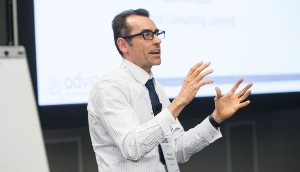
by Russell Hutchinson

What are the big risks? How well prepared are we for them? I’ve got friends that smoke and only buy organic chicken, to me, that looks like an odd couple of priorities. Taking care of my health makes a big difference to my life – and prevention is always easier than cure, so effort goes into that.
Of course, trouble can come to all of us – whether healthy or not – so planning for sickness or a job loss makes sense.
I am a fan of taking advice, and recommend that, but some fundamentals are well known: having a cash cushion, an emergency fund, makes a huge difference to one’s ability to face everything from the need for unexpected work on the car to receiving a cancer diagnosis. Some financial advisers I know recommend three months’ income as a guide. They tell clients that if you aren’t in a position to save towards an emergency fund you are in a precarious place – because even a little bad luck will knock you off your perch.
Even with good planning, some risks are too large to effectively save for.
What if you cannot work for two years? Or even the rest of your life?
If such a disability happened more than ten years before retirement, it would be financially devastating for most households. That’s where insurance comes in.
The difficult thing is working out how to allocate resources between your goals.
The two most common financial goals in life are a debt-free home and a retirement fund. Having enough insurance to ensure that you can still achieve those two even if someone in your household suffers illness, disability, or death is usually wise.
But how do you share out your money between those three demands?
Last week I spent almost three days in workshops with advisers, and this theme came up several times. Some have deliberate strategies for working through the conversation in detail: providing strong guidance to the client along the lines ‘x is more important than y’ and ‘the risk of a is bigger than b’.
Others just keep challenging the client to think about their values and come up with an answer.
I cannot tell you which is, objectively, the ‘best’ from a customer perspective.
I have some suspicions that it may vary depending on the client. I know that training requirements and documentation will vary a lot between the two approaches, with the more rules-based one being easier, while the client-values-focused approach may mean greater commitment on their part.
But whichever path you take, I am sure that it takes planning. The relief that a client feels from having the conversation, working out their approach, and then being able to let go of the worry may be the most valuable thing about the entire engagement.
| « The many different kinds of financial adviser | Here's why you haven't seen many CEOs and senior execs recently » |
Special Offers
No comments yet
Sign In to add your comment

© Copyright 1997-2024 Tarawera Publishing Ltd. All Rights Reserved